AI-Driven Personalized Marketing: A 5-Minute Guide to Implementation
Explore the ROI and best practices for AI-powered personalized marketing using real brand case data.
24 min read
Brands at Play : Sep 28, 2025 3:32:10 PM
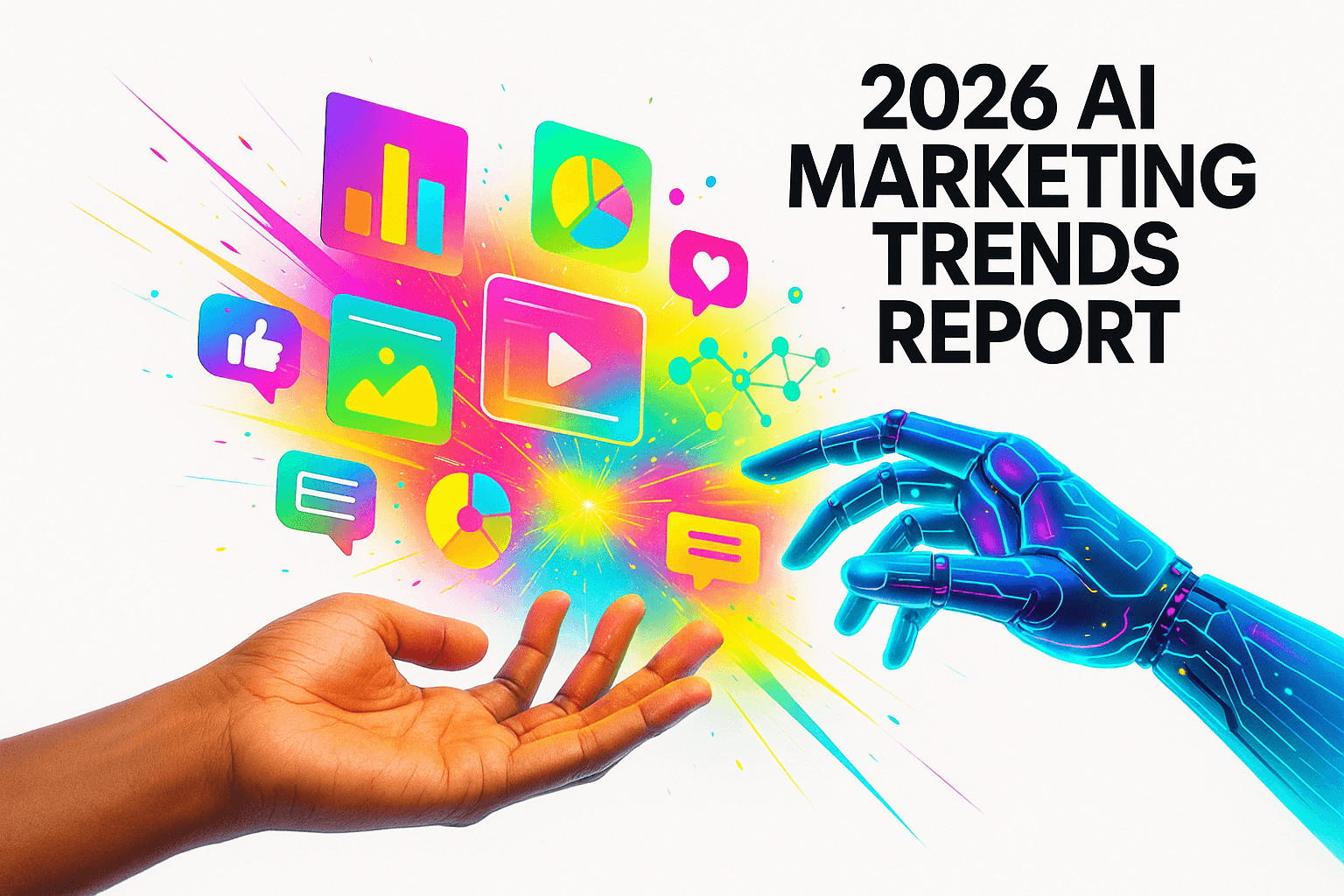

Executive Summary: Artificial intelligence is fundamentally reshaping marketing operations, with 65% of organizations now utilizing generative AI on a regular basis. This comprehensive guide examines the eight most critical 2026 marketing trends driving measurable ROI, from unified customer data platforms to hybrid intelligence workflows that combine human expertise with AI capabilities. Crucially, 2026 marks the great "democratization of AI marketing," as small businesses now have access to predictive analytics, autonomous advertising, and conversational AI that were previously exclusive to Fortune 500 companies, thereby fundamentally leveling the competitive playing field.
The marketing landscape of 2026 represents a fundamental shift from reactive campaign management to predictive, AI-driven growth engines. According to McKinsey's 2024 State of AI report, organizations implementing AI across marketing functions report 15-25% increases in revenue within 18 months (McKinsey & Company. "The State of AI in 2024." McKinsey Global Institute, Sept. 2024, https://www.mckinsey.com/capabilities/quantumblack/our-insights/the-state-of-ai-in-2024).
What makes 2026 particularly significant is the unprecedented democratization of AI marketing capabilities. A local retailer can now deploy Amazon Personalize for under $200, while autonomous advertising platforms optimize campaigns with the same sophistication as global brands. HubSpot's predictive lead scoring, Google's Performance Max campaigns, and conversational AI through platforms like Intercom have made enterprise-grade marketing intelligence accessible to businesses of all sizes. This technological democratization means competitive advantage no longer depends on company size or marketing budget—it depends on strategic implementation and execution speed.

Implementation Difficulty: Medium | Timeline: 6-18 months | Investment Level: $0-$150K
Customer Data Platforms (CDPs) will shift from being “nice-to-have” tools into the essential backbone of modern marketing. A CDP unifies fragmented customer data across CRM, e-commerce, mobile, social, and offline channels into persistent, real-time profiles. These unified profiles fuel personalization, predictive analytics, and campaign orchestration.
Why it matters: Without a CDP, marketing organizations risk operating with incomplete or inaccurate data, undermining every AI-driven initiative. For C-suite leaders, a CDP is the only way to link marketing activity to ROI with credibility. For marketing teams, it eliminates silos and manual reporting. For SMB owners, it creates affordable pathways to personalization once reserved for enterprise brands.
Forrester's 2024 research shows businesses deploying CDPs achieve 2.4x higher revenue growth compared to those operating with siloed data systems (Forrester Research. "The Total Economic Impact of Customer Data Platforms." Forrester TEI Study, Aug. 2024, https://www.forrester.com/report/the-total-economic-impact-of-customer-data-platforms/).
Enterprise (1000+ employees):
Mid-Market (100-1000 employees):
Small Business (<100 employees):
Phase 1 (Months 1-3): Foundation
Phase 2 (Months 4-12): Activation
Phase 3 (Months 12-18): Optimization

Implementation Difficulty: High | Timeline: 3-12 months | Investment Level: $500-$50K
As third-party cookies vanish and global regulations tighten, privacy-first marketing has become the cornerstone of trust-based engagement. By 2026, marketing leaders will no longer rely on opaque tracking; instead, they will design value exchanges where customers willingly share information in return for personalization, convenience, or exclusive benefits.
For executives, this means reframing privacy from a compliance line item into a strategic trust asset that strengthens board-level reputation and long-term shareholder value. For marketing professionals, it demands new playbooks for capturing, managing, and activating first-party data. For SMB owners, it creates clarity: invest in simple, trustworthy systems that transform limited customer data into actionable insights.
Ultimately, trust will be the most valuable currency of 2026 marketing. Companies that can prove they protect customer information while delivering personalized value will gain durable loyalty.
PwC's 2024 Consumer Trust Survey reveals that 76% of consumers will pay premium prices for brands they trust with their personal data—a 23% increase from 2022 (PwC. "2024 Consumer Trust Survey." PwC Digital Services, June 2024, https://www.pwc.com/us/en/services/consulting/library/consumer-intelligence-series/consumer-trust.html).
Consent Management Platforms:
First-Party Data Activation:
Quick Wins (0-3 months):
Scaling (3-12 months):

Implementation Difficulty: Medium | Timeline: 3-9 months | Investment Level: $0-$100K
In 2026, predictive analytics will no longer be a reporting tool — it will be the engine that drives marketing actions in real time. Traditional analytics tell marketers what happened; predictive analytics tells them what is likely to happen next and prescribes how to respond.
For executives, predictive analytics provides board-ready clarity: it links investments directly to future revenue and customer lifetime value (CLV). For marketing leaders, it transforms dashboards from static reporting into automated decision systems that optimize campaigns dynamically. For SMBs, predictive tools are becoming affordable and accessible, enabling smaller teams to anticipate customer needs, reduce churn, and compete with larger players.
The shift from insight to action is critical. Marketers who use predictive models to automate lead scoring, customer retention campaigns, or budget allocation will significantly outpace competitors who rely on backward-looking reports.
Forrester's 2024 study shows companies using predictive analytics achieve 73% faster decision-making and 2.9x higher campaign performance compared to reactive approaches (Forrester Research. "The State of Predictive Analytics in Marketing." Forrester Analytics Report, Sept. 2024, https://www.forrester.com/report/the-state-of-predictive-analytics-in-marketing/).
Enterprise Solutions:
Mid-Market Options:
Implementation Framework:
Phase 1: Foundation (Months 1-3)
Phase 2: Advanced Models (Months 4-9)
 2026 Marketing Trend 4: Hyper-Personalization Through AI and Machine Learning
2026 Marketing Trend 4: Hyper-Personalization Through AI and Machine LearningImplementation Difficulty: High | Timeline: 6-18 months | Investment Level: $100-$200K
Personalization in 2026 will move from basic segments to real-time, one-to-one experiences orchestrated by AI across web, app, email, ads, and service. Instead of a single generic journey, each customer will encounter dynamic content, offers, and product recommendations generated from first-party data, behavioral signals, and predictive models.
For executives, this is not a cosmetic upgrade — it is a revenue and retention engine that ties marketing investment to measurable CLV, conversion rate, and incremental margin. For marketing leaders, hyper-personalization requires disciplined data foundations (CDP), decisioning (predictive/ML), and activation (journey orchestration) — with governance over privacy, bias, and brand voice. For SMBs, the democratization of AI tools means enterprise-grade recommendation and journey tech is now accessible and can be layered onto existing CRM and marketing stacks.
Personalization already separates leaders from laggards, and the delta is widening: companies that excel at personalization grow revenue faster than peers, and consumers increasingly expect relevant, context-aware experiences. In 2026, the competitive question is not if you personalize, but how intelligently and how fast.
McKinsey's 2024 research shows that companies excelling at personalization drive 40% more revenue from those activities than average players, with leaders generating 80% of their growth from personalized products and experiences (McKinsey & Company. "The Value of Getting Personalization Right." McKinsey Marketing & Sales, Oct. 2024, https://www.mckinsey.com/capabilities/growth-marketing-and-sales/our-insights/the-value-of-getting-personalization-right).
Real-Time Decisioning Engines:
Recommendation Systems:
Journey Orchestration:
Quick Wins (0-6 months):
Scaling (6-12 months):
Advanced (12-18 months):

Implementation Difficulty: Medium | Timeline: 3-12 months | Investment Level: $30-$50K
Organizational design is also expected to evolve in 2026. The highest-performing marketing organizations in 2026 won’t be “AI-first” or “human-first” — they’ll be hybrid-intelligence organizations, where humans collaborate with AI seamlessly. Hybrid intelligence is the deliberate design of workflows where humans set strategy, judgment, and brand voice, while AI accelerates analysis, creation, personalization, testing, and orchestration. It’s not a tool rollout; it’s an operating-model shift spanning skills, roles, incentives, and governance.
For executives, hybrid intelligence converts AI from sporadic pilots into predictable P&L impact — more output, higher quality, faster decisions, lower unit costs. For marketing leaders, it means re-platforming work: prompt libraries, review checklists, and human-in-the-loop (HITL) gates for safety and brand integrity. For SMBs, it’s a force-multiplier: smaller teams can compete by pairing domain expertise with carefully orchestrated AI co-pilots across the funnel (research → planning → content → distribution → measurement → iteration).
Microsoft's 2024 Work Trend Index shows that employees using AI copilots complete tasks 29% faster on average, with 70% reporting increased productivity. However, success requires structured human-in-the-loop (HITL) workflows rather than ad-hoc AI adoption (Microsoft Corporation. "2024 Work Trend Index." Microsoft Research, May 2024, https://www.microsoft.com/en-us/worklab/work-trend-index).
BCG's controlled trials demonstrate that GPT-4 significantly boosts performance on creative and analytical tasks when combined with human expertise, but requires careful workflow design to avoid the "jagged frontier" where AI capabilities vary unpredictably (Boston Consulting Group. "Navigating the Jagged Frontier of Generative AI." BCG Insights, Sept. 2023, https://www.bcg.com/publications/2023/how-people-create-and-destroy-value-with-gen-ai).
AI Copilots and Assistants:
Content Creation and Review:
Creative and Design Collaboration:
Workflow Orchestration:
Phase 1: Foundation (0-3 months)
Phase 2: Workflow Integration (3-9 months)
Phase 3: Advanced Collaboration (9-12 months)
AI-Augmented Marketing Roles:
Productivity Metrics:
Quality Metrics:
 2026 Marketing Trend 6: Conversational AI and Full-Funnel Autonomous Customer Engagement
2026 Marketing Trend 6: Conversational AI and Full-Funnel Autonomous Customer EngagementImplementation Difficulty: Medium | Timeline: 3-12 months | Investment Level: $25-$100K
In 2026, conversational AI will move from support-side chatbots to full-funnel, revenue-impacting agents that qualify leads, personalize buying journeys, resolve service issues, and trigger next-best actions in real time. Unlike legacy bots that relied on rigid scripts, modern agents combine LLMs, retrieval-augmented generation (RAG), tool use, and workflow orchestration to understand intent, fetch the right data, take action (e.g., create a ticket, schedule a demo, modify an order), and hand off to humans only when needed.
For executives, this is an operating model shift: agents compress cycle time from first touch to revenue and reallocate labor to higher-value work, with board-ready metrics (AHT, FCR, NPS/CSAT, conversion, CAC). For marketing and CX leaders, agents become always-on owned channels that capture first-party data and deliver measurable lift in conversion and retention. For small and medium-sized businesses (SMBs), prebuilt agent frameworks now make enterprise-grade automation accessible without a large ML team.
Gartner predicts that by 2026, conversational AI will reduce customer service labor costs by 80 billion dollars globally, while simultaneously improving customer satisfaction scores by an average of 25% (Gartner Inc. "Predicts 2025: Customer Service and Support Technologies." Gartner Research, Dec. 2024, https://www.gartner.com/en/documents/4018058).
Enterprise-Grade Solutions:
Mid-Market Platforms:
Specialized Solutions:
Phase 1: Foundation (0-3 months)
Phase 2: Intelligence (3-9 months)
Phase 3: Autonomy (9-12 months)

Implementation Difficulty: High | Timeline: 6-24 months | Investment Level: $0-$1M+
The boundary between digital and physical experiences will blur in 2026, creating a “phygital” ecosystem where customers seamlessly transition between online and offline interactions. Advances in augmented reality (AR), virtual reality (VR), spatial computing, and digital twins will transform how brands deliver engagement. This isn’t just about futuristic campaigns — it’s about embedding immersive technologies into everyday marketing strategies.
For executives, this means repositioning marketing as a driver of experience innovation that strengthens brand equity and customer loyalty. For marketing professionals, it demands experimentation with immersive platforms, integration into customer journeys, and the ability to design multi-channel, multi-sensory campaigns. For SMBs, it opens affordable opportunities through AR-enabled e-commerce tools, shoppable social platforms, and gamified experiences that were once only accessible to large enterprises.
Phygital isn’t about gimmicks — it’s about blending convenience, personalization, and immersion to meet rising consumer expectations for meaningful brand interactions.
The global AR/VR market is projected to reach $209 billion by 2025, with retail and marketing applications driving 34% of enterprise adoption (IDC Worldwide Augmented and Virtual Reality Spending Guide. "AR/VR Market Forecast 2025." International Data Corporation, Aug. 2024, https://www.idc.com/getdoc.jsp?containerId=IDC_P29633).
Deloitte's 2024 study shows that 71% of consumers would shop more frequently with brands offering AR try-before-you-buy experiences, and these customers show 64% higher purchase conversion rates (Deloitte Digital. "The Spatial Commerce Revolution." Deloitte Insights, Sept. 2024, https://www2.deloitte.com/us/en/insights/industry/technology/spatial-commerce-ar-vr.html).
AR Development Platforms:
VR/Spatial Computing:
E-commerce AR Integration:
Pilot Phase (0-6 months):
Scaling Phase (6-18 months):
Advanced Phase (18-24 months):
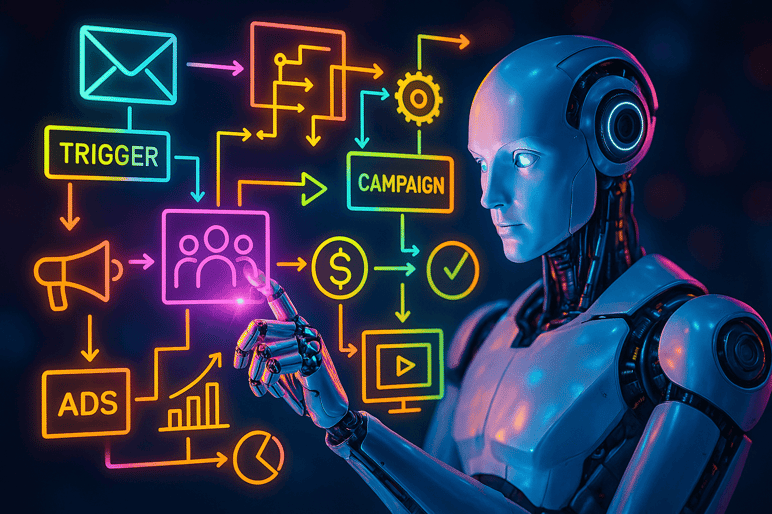
Implementation Difficulty: Medium | Timeline: 3-12 months | Investment Level: $1K-$500K
Autonomous AI agents will fundamentally reshape digital and programmatic advertising in 2026. Unlike today’s semi-automated platforms that rely on human-set budgets, audiences, and creatives, autonomous AI systems will manage campaigns end-to-end: generating creative assets, testing variations, reallocating spend in real time, and optimizing toward ROI or CLV with minimal human intervention.
For executives, this creates a powerful shift — advertising budgets will increasingly operate like self-optimizing investment portfolios, managed by AI agents accountable to ROI, margins, and risk tolerance. For marketing leaders, the challenge becomes governance: setting brand voice rules, risk boundaries, and ensuring AI-driven campaigns remain compliant and creative. For SMBs, AI democratizes programmatic, reducing the need for specialized trading desks and enabling access to enterprise-level efficiency and scale.
The future of advertising is not just programmatic automation — it is programmatic autonomy, where campaigns design, run, test, and evolve themselves continuously.
eMarketer projects that autonomous AI will manage 78% of all programmatic advertising spend by 2026, representing $567 billion in global ad expenditure (eMarketer. "Programmatic Advertising Forecast 2025." Insider Intelligence, Oct. 2024, https://www.emarketer.com/content/programmatic-advertising-forecast-2025).
Google's Performance Max campaigns, representing early autonomous advertising, show average conversion increases of 18% and cost-per-acquisition reductions of 12% compared to traditional campaign management (Google Inc. "Performance Max Results Study 2024." Google Ads Research, July 2024, https://ads.google.com/research/performance-max-results/).
Platform-Native Solutions:
Independent DSPs:
Creative Intelligence Platforms:
Foundation (0-3 months):
Expansion (3-9 months):
Optimization (9-12 months):

Week 1-2: Assessment and Foundation
Week 3-8: Pilot Implementation
Week 9-12: Measurement and Scaling
| Trend | ROI Timeline | Implementation Complexity | Competitive Advantage | Priority Score |
|---|---|---|---|---|
| Customer Data Platform | 6-12 months | Medium | High | 9/10 |
| Predictive Analytics | 3-6 months | Medium | High | 8/10 |
| Hybrid Intelligence | 1-6 months | Medium | High | 8/10 |
| Privacy-First Marketing | 3-9 months | High | Medium | 7/10 |
| Conversational AI | 3-6 months | Medium | Medium | 7/10 |
| Hyper-Personalization | 6-18 months | High | High | 8/10 |
| Autonomous Advertising | 1-3 months | Low | Medium | 6/10 |
| Immersive Technologies | 12-24 months | High | Low | 5/10 |
The latest marketing trends of 2026 represent more than technological advancement—they signal a fundamental shift in how successful organizations acquire, retain, and grow customer relationships. What makes this moment historically significant is the unprecedented democratization of AI marketing capabilities: businesses of every size now have access to the same predictive analytics, autonomous advertising, and conversational AI systems that were exclusively available to Fortune 500 companies just years ago.
This democratization creates both opportunity and urgency. Companies that begin implementing these strategies now will establish sustainable competitive advantages in an increasingly AI-driven marketplace. The evidence is clear: organizations that delay adoption risk falling permanently behind. McKinsey's research shows that digital marketing leaders maintain their advantage over laggards for an average of 7 years, making immediate action essential for long-term competitiveness.
As we look ahead to 2026, one theme unites every 2026 marketing trend explored: AI is no longer an optional add-on—it is the foundation of competitive marketing strategy. From predictive analytics to autonomous programmatic advertising, the organizations that will thrive are those that embed AI not just in tools, but in workflows, teams, and decision systems.
The playing field has been leveled by technology accessibility, but competitive outcomes will be determined by strategic execution. Small businesses with unified data strategies are increasingly outperforming enterprises with legacy systems. Startups implementing hybrid intelligence workflows are competing effectively against brands with substantially larger budgets. Success no longer depends primarily on financial resources—it depends on implementation speed, strategic thinking, and organizational agility.
For marketing leaders across organizations of all sizes, the principles for success remain consistent:
By acting on these principles now, organizations position themselves not only to survive disruption but to set the standard for how AI and digital marketing create sustainable growth in 2026 and beyond. The democratization of AI marketing tools means every business has the opportunity to compete—but only those who act decisively will capture it.
 Turn 2026 Marketing Strategies Into Action
Turn 2026 Marketing Strategies Into ActionAt Brands at Play, we believe the most powerful strategies start from the inside out — understanding how your business operates, where inefficiencies lie, and how AI can be applied for maximum impact.
If your organization is ready to:
Streamline workflows and eliminate wasted spend
Integrate AI and automation into marketing systems
Personalize customer journeys at scale
Redesign teams for hybrid intelligence
Drive measurable ROI and growth in 2026
Connect with us today. Our AI³ Assessment and tailored strategy roadmaps help marketing teams transform complexity into clarity, turning technology into a sustainable competitive edge.
 Frequently Asked Questions (FAQs)
Frequently Asked Questions (FAQs)The eight leading AI marketing trends for 2026 include customer data platforms as foundational infrastructure, privacy-first marketing with consent-driven growth, AI-powered predictive analytics for real-time decisions, hyper-personalization through machine learning, hybrid intelligence workflows combining human expertise with AI capabilities, conversational AI for autonomous customer engagement, immersive phygital experiences using AR/VR, and autonomous AI managing programmatic advertising campaigns end-to-end.
Digital marketing trends in 2026 will fundamentally shift organizations from reactive campaign management to predictive, AI-driven growth engines. Marketing will evolve into closed-loop systems where customer data platforms feed predictive models that automatically trigger personalized experiences, while autonomous AI optimizes advertising spend in real-time. This transformation enables faster decision-making, higher ROI, and sustainable competitive advantages through data-driven automation.
Customer data platforms serve as the foundational infrastructure for all AI-driven marketing initiatives in 2026. Forrester research shows businesses deploying CDPs achieve 2.4x higher revenue growth by unifying fragmented customer data into real-time profiles that power personalization, predictive analytics, and campaign orchestration. Without a CDP, organizations risk operating with incomplete data that undermines every downstream AI application.
Hybrid intelligence represents the strategic collaboration between human expertise and AI capabilities to maximize marketing performance. Microsoft research shows teams using AI copilots complete tasks 29% faster while maintaining creative quality through human oversight. In 2026, successful marketing organizations will redesign workflows where humans provide strategic direction and brand stewardship while AI handles analysis, content creation, and optimization at scale.
Predictive analytics evolves from reporting tool to decision engine in 2026, automatically adjusting campaigns, reallocating budgets, and triggering personalized experiences based on behavioral predictions. Forrester data shows companies using predictive analytics achieve 73% faster decision-making and 2.9x higher campaign performance. By 2026, over 60% of CMOs will adopt predictive platforms as core capabilities for anticipating customer behavior and optimizing marketing investments.
Autonomous AI in programmatic advertising manages campaigns end-to-end—from creative generation to budget reallocation—with minimal human oversight. Google's Performance Max campaigns demonstrate 18% average conversion increases and 12% cost-per-acquisition reductions compared to traditional management. This approach reduces media waste, improves targeting precision, and enables real-time optimization that maximizes return on advertising spend across all digital channels.
Small and mid-sized businesses gain access to enterprise-grade marketing capabilities through democratized AI tools and platforms. SMBs can implement customer data platforms like HubSpot CRM, deploy conversational AI with Intercom, and launch autonomous advertising campaigns through Google Performance Max—all at accessible price points. These technologies enable smaller teams to compete with larger brands through personalized customer journeys, predictive analytics, and automated campaign optimization.
Hyper-personalization uses AI and machine learning to deliver real-time, individual-level experiences across all customer touchpoints. McKinsey research shows companies excelling at personalization drive 40% more revenue from these activities, with leaders generating 80% of growth from personalized products and experiences. In 2026, successful organizations will move beyond basic segmentation to dynamic content, offers, and recommendations generated from behavioral signals and predictive models.
Privacy-first marketing transforms compliance requirements into competitive advantages by building customer trust through transparent value exchanges. PwC research reveals 76% of consumers pay premium prices for brands they trust with personal data. Organizations implementing consent-driven strategies, robust first-party data collection, and privacy-preserving analytics create sustainable customer relationships while reducing dependence on third-party cookies and maintaining regulatory compliance.
Organizations implementing comprehensive AI marketing strategies report significant returns: Forrester shows 82% of companies using predictive analytics achieve positive ROI within 12 months, while businesses deploying CDPs see 2.4x higher revenue growth. Autonomous advertising reduces acquisition costs by up to 30%, and hyper-personalization drives 40% more revenue from personalization activities. The key is integrated implementation across multiple trends rather than isolated point solutions.
Marketing leaders should prioritize based on ROI timeline, implementation complexity, and competitive advantage. Customer data platforms and predictive analytics offer the highest priority scores due to their foundational nature and relatively quick returns. Hybrid intelligence and conversational AI provide medium-term wins with manageable complexity. Hyper-personalization requires higher investment but delivers substantial competitive advantages. Immersive technologies should be considered for longer-term differentiation based on industry relevance.
Organizations delaying adoption of AI marketing trends risk permanent competitive disadvantage. McKinsey research shows digital marketing leaders maintain their advantage over laggards for an average of seven years. Companies without unified data strategies face 40% higher customer acquisition costs, while those lacking predictive capabilities cannot compete with organizations making real-time, data-driven decisions. The window for competitive adoption is narrowing rapidly as AI tools become standard rather than differentiating.
 Glossary of Key Terms
Glossary of Key TermsAI³ Assessment: Brands at Play’s proprietary framework for evaluating AI readiness and building tailored adoption roadmaps.
Autonomous AI: Artificial intelligence systems that independently manage workflows or campaigns end-to-end, requiring minimal human input.
CDP (Customer Data Platform): A software platform that unifies first-party customer data from multiple sources into a single profile.
CLV (Customer Lifetime Value): A metric estimating the total revenue a customer generates over their relationship with a brand.
Commerce Media: Digital advertising that leverages retailer or marketplace first-party data to reach high-intent shoppers with closed-loop attribution.
Conversational AI: AI-powered systems (e.g., chatbots, voice agents) that engage in natural language dialogue with users and perform actions.
Hybrid Intelligence: A model where human expertise and AI capabilities are combined to enhance decision-making and productivity.
Phygital: The integration of physical and digital experiences into seamless customer journeys.
Predictive Analytics: The use of statistical models and machine learning to forecast future outcomes and recommend actions.
Programmatic Advertising: Automated digital advertising that uses AI and algorithms to buy and optimize ads in real time.
Adobe Inc. "Adobe Sensei AI and Machine Learning." Adobe Corporate, 2024, https://adobe.com/sensei.html.
Airbnb Inc. "Q3 2024 Earnings Call Transcript." Airbnb Investor Relations, Nov. 2024, https://investors.airbnb.com.
Amazon.com Inc. "2024 Annual Report." Amazon Investor Relations, Feb. 2025, https://ir.aboutamazon.com.
American Express Company. "2024 Corporate Social Responsibility Report." American Express Corporate, March 2024, https://about.americanexpress.com.
Bank of America Corporation. "Q4 2024 Earnings Report." Bank of America Investor Relations, Jan. 2025, https://investor.bankofamerica.com.
Boston Consulting Group. "Navigating the Jagged Frontier of Generative AI." BCG Insights, Sept. 2023, https://www.bcg.com/publications/2023/how-people-create-and-destroy-value-with-gen-ai.
Deloitte Digital. "The Spatial Commerce Revolution: AR and VR in Retail." Deloitte Insights, Sept. 2024, https://www2.deloitte.com/us/en/insights/industry/technology/spatial-commerce-ar-vr.html.
eMarketer. "Programmatic Advertising Forecast 2025." Insider Intelligence, Oct. 2024, https://www.emarketer.com/content/programmatic-advertising-forecast-2025.
European Data Protection Board. "Annual Report 2024." EDPB Publications, Jan. 2025, https://edpb.europa.eu/news/news_en.
Forrester Research. "The State of Predictive Analytics in Marketing 2024." Forrester Analytics Report, Sept. 2024, https://www.forrester.com/report/the-state-of-predictive-analytics-in-marketing.
Forrester Research. "The Total Economic Impact of Customer Data Platforms." Forrester TEI Study, Aug. 2024, https://www.forrester.com/report/the-total-economic-impact-of-customer-data-platforms.
Gartner Inc. "2024 CMO Spend and Strategy Survey." Gartner Research, March 2024, https://www.gartner.com/en/marketing/research.
Gartner Inc. "Predicts 2025: Customer Service and Support Technologies." Gartner Research, Dec. 2024, https://www.gartner.com/en/documents/4018058.
GitHub Inc. "GitHub Copilot Research Findings." GitHub Blog, Dec. 2023, https://github.blog/2023-06-13-survey-reveals-ais-impact-on-the-developer-experience/.
Google Inc. "Performance Max Campaign Results Study 2024." Google Ads Research, July 2024, https://ads.google.com/research/performance-max-results.
IDC. "Worldwide Augmented and Virtual Reality Spending Guide 2025." International Data Corporation, Aug. 2024, https://www.idc.com/getdoc.jsp?containerId=IDC_P29633.
Inter IKEA Systems B.V. "Digital Innovation and Sustainability Report 2024." IKEA Corporate Communications, May 2024, https://www.ikea.com/us/en/this-is-ikea/reports-and-documents.
Klarna Bank AB. "AI Assistant Handles Two-Thirds of Customer Service Chats." Klarna Newsroom, Feb. 2024, https://www.klarna.com/international/press/klarna-ai-assistant-handles-two-thirds-of-customer-service-chats.
McKinsey & Company. "The State of AI in 2024: McKinsey's Annual Survey." McKinsey Global Institute, Sept. 2024, https://www.mckinsey.com/capabilities/quantumblack/our-insights/the-state-of-ai-in-2024.
McKinsey & Company. "The Value of Getting Personalization Right—or Wrong—Is Multiplying." McKinsey Marketing & Sales, Oct. 2024, https://www.mckinsey.com/capabilities/growth-marketing-and-sales/our-insights/the-value-of-getting-personalization-right.
Microsoft Corporation. "2024 Work Trend Index: AI at Work Is Here. Now Comes the Hard Part." Microsoft Research, May 2024, https://www.microsoft.com/en-us/worklab/work-trend-index.
Netflix Inc. "Q4 2024 Shareholder Letter." Netflix Investor Relations, April 2024, https://ir.netflix.net.
Nike Inc. "FY2024 Annual Report and Form 10-K." Nike Investor Relations, July 2024, https://investors.nike.com.
PwC. "2024 Consumer Trust Survey: The Trust Advantage." PwC Digital Services, June 2024, https://www.pwc.com/us/en/services/consulting/library/consumer-intelligence-series/consumer-trust.html.
Sephora Inc. "Beauty Insider Program Performance Metrics 2024." Sephora Corporate Communications, Feb. 2024, https://www.sephora.com/about.
Starbucks Corporation. "Q1 FY2025 Earnings Conference Call." Starbucks Investor Relations, Feb. 2025, https://investor.starbucks.com.
The New York Times Company. "Q4 2024 Earnings Report." NYT Investor Relations, Feb. 2025, https://investors.nytco.com.
Unilever PLC. "Digital Marketing Transformation Report 2024." Unilever Corporate Communications, Sept. 2024, https://www.unilever.com/news/press-and-media.
Discover the top AI-driven marketing automation trends for 2026, from optimized workflows to personalized customer journeys. What if your marketing could predict customer behavior before they even know what they want? While marketers sleep, AI systems are segmenting audiences, personalizing content, and optimizing campaigns in real-time—and 2026 is shaping up to be a pivotal year for AI-driven marketing automation. Read more...
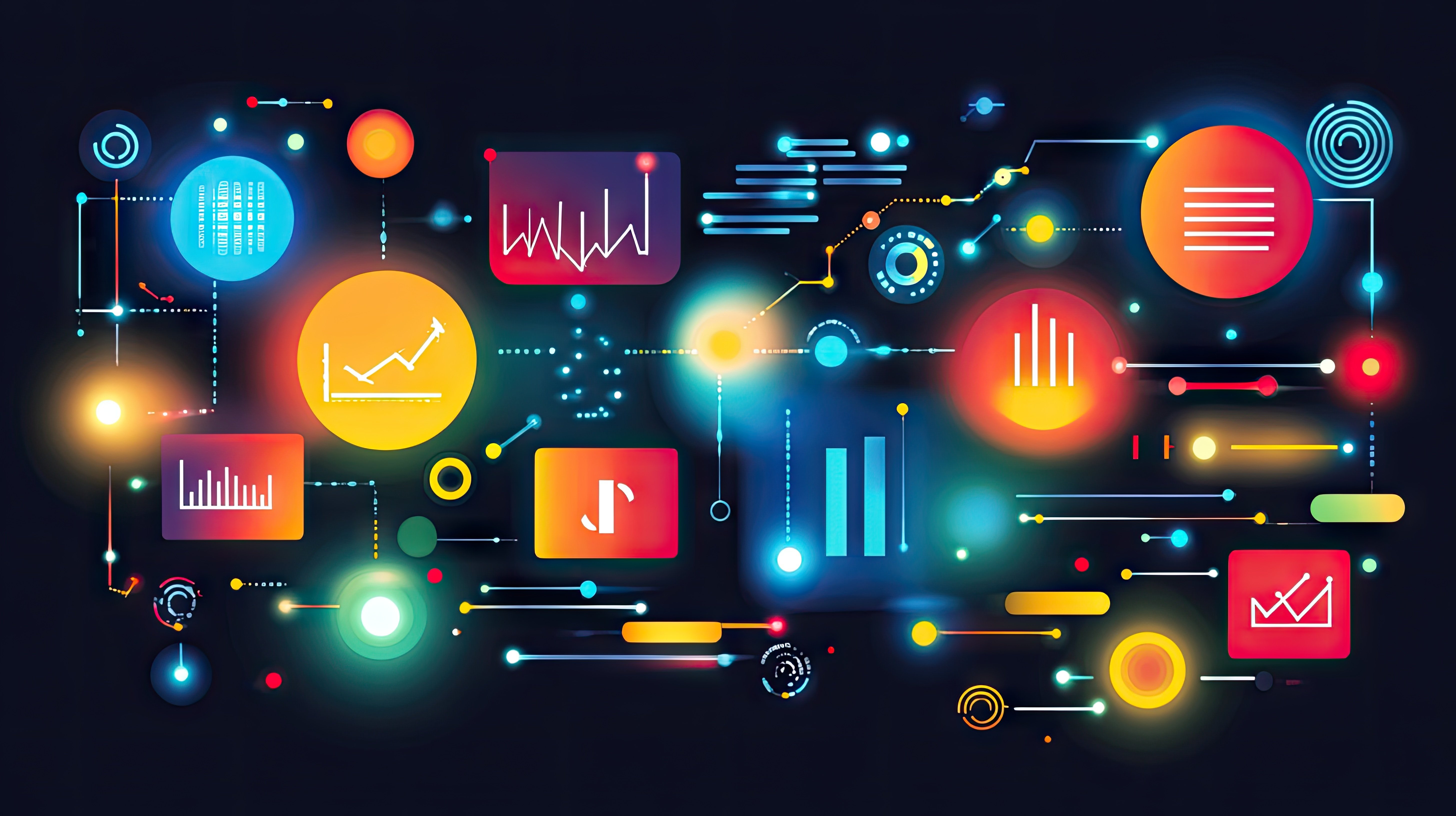
Explore the ROI and best practices for AI-powered personalized marketing using real brand case data.
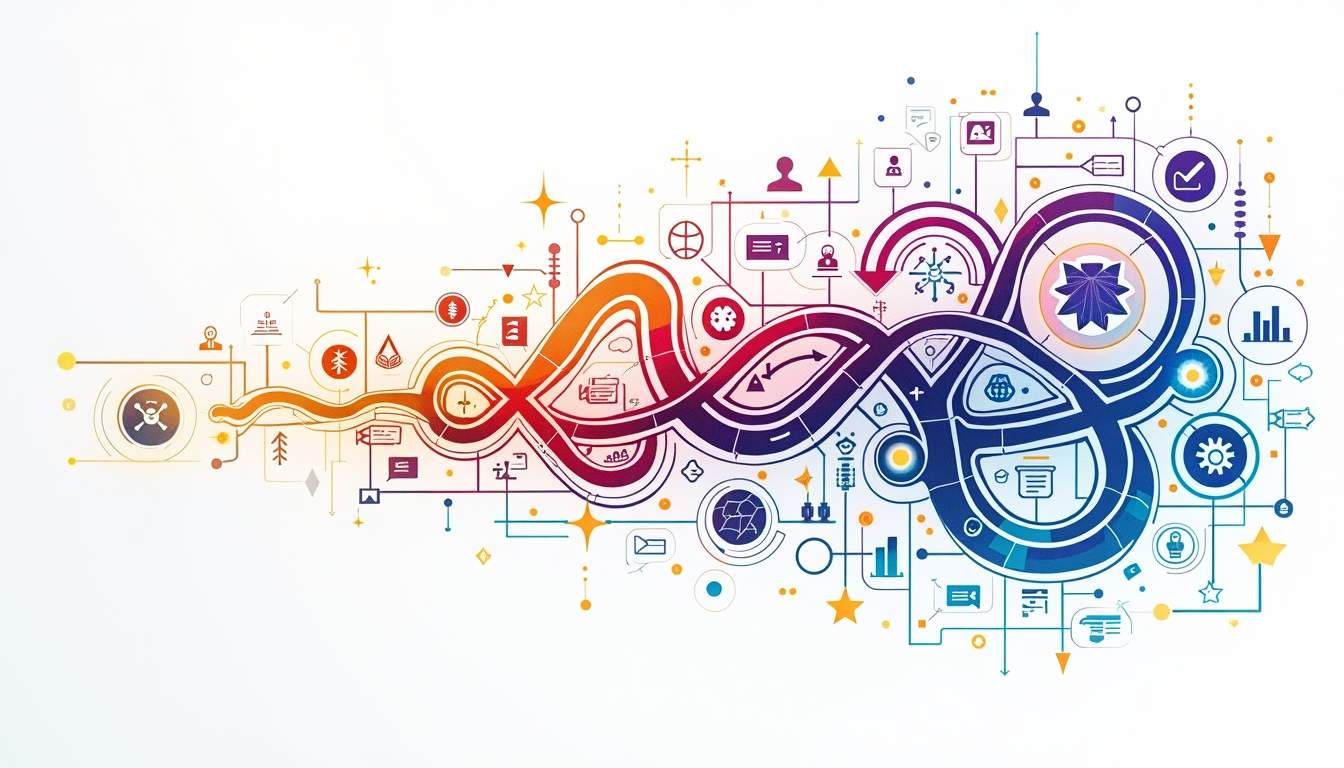
Discover the top AI-driven marketing automation trends for 2026, from optimized workflows to personalized customer journeys.
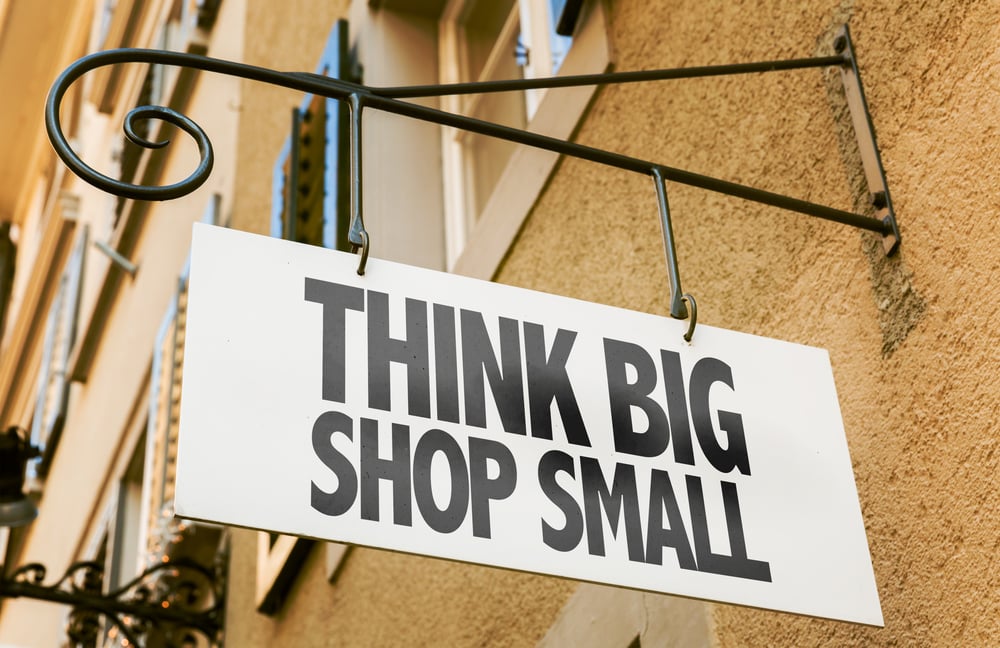
Small businesses are rewriting the rules of marketing. With tighter budgets, leaner teams, and more competition than ever, success comes down to one...